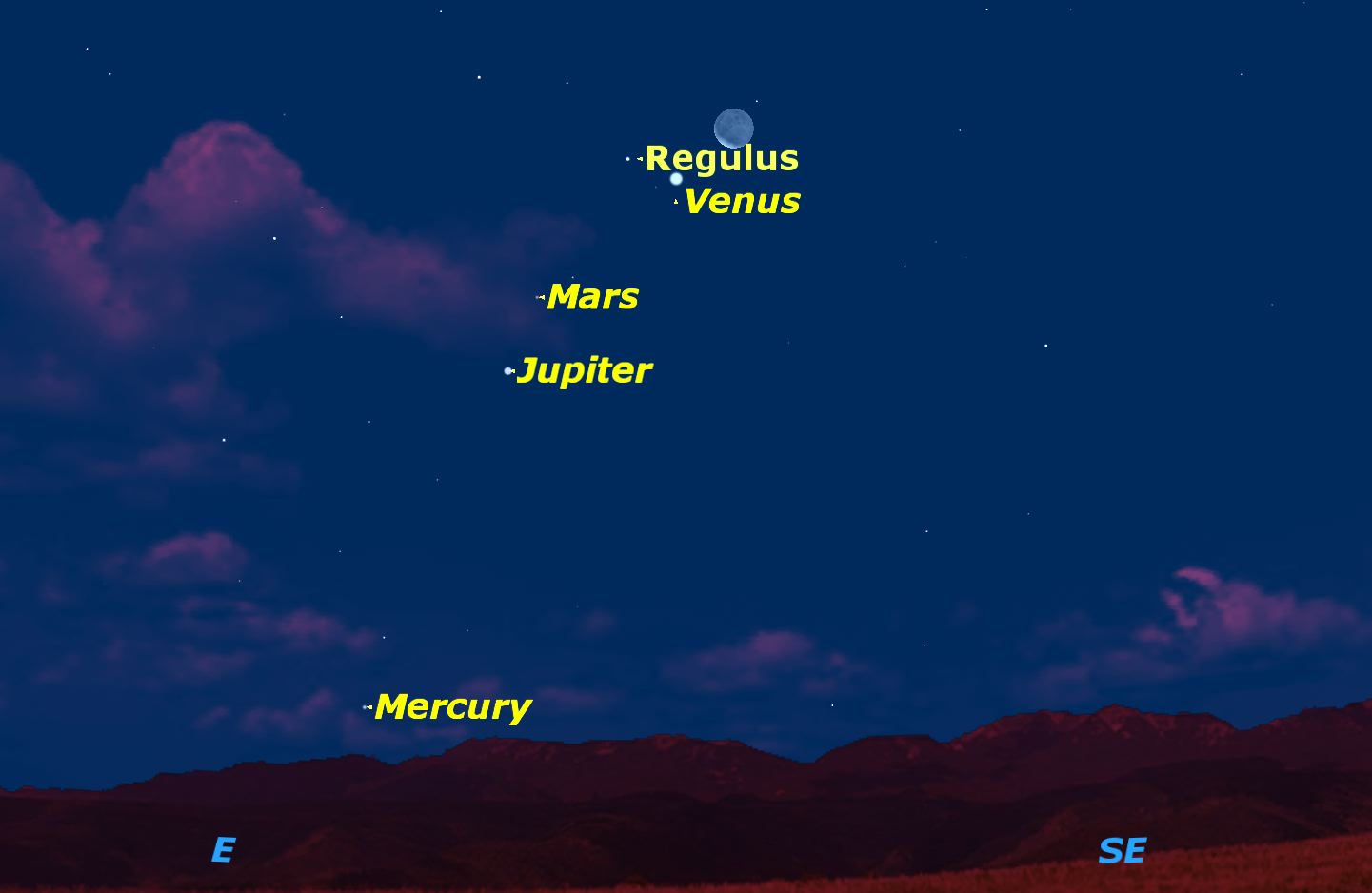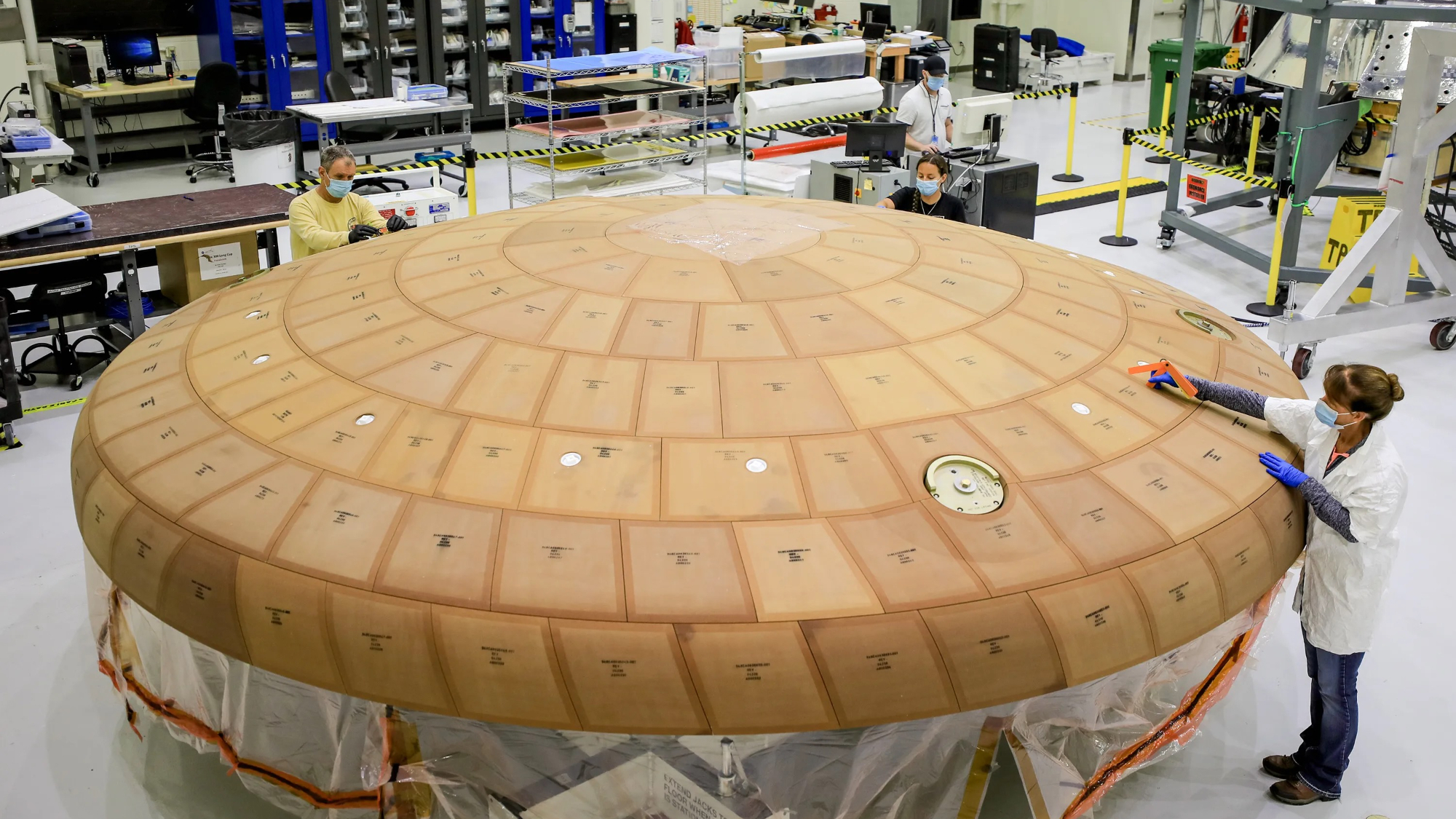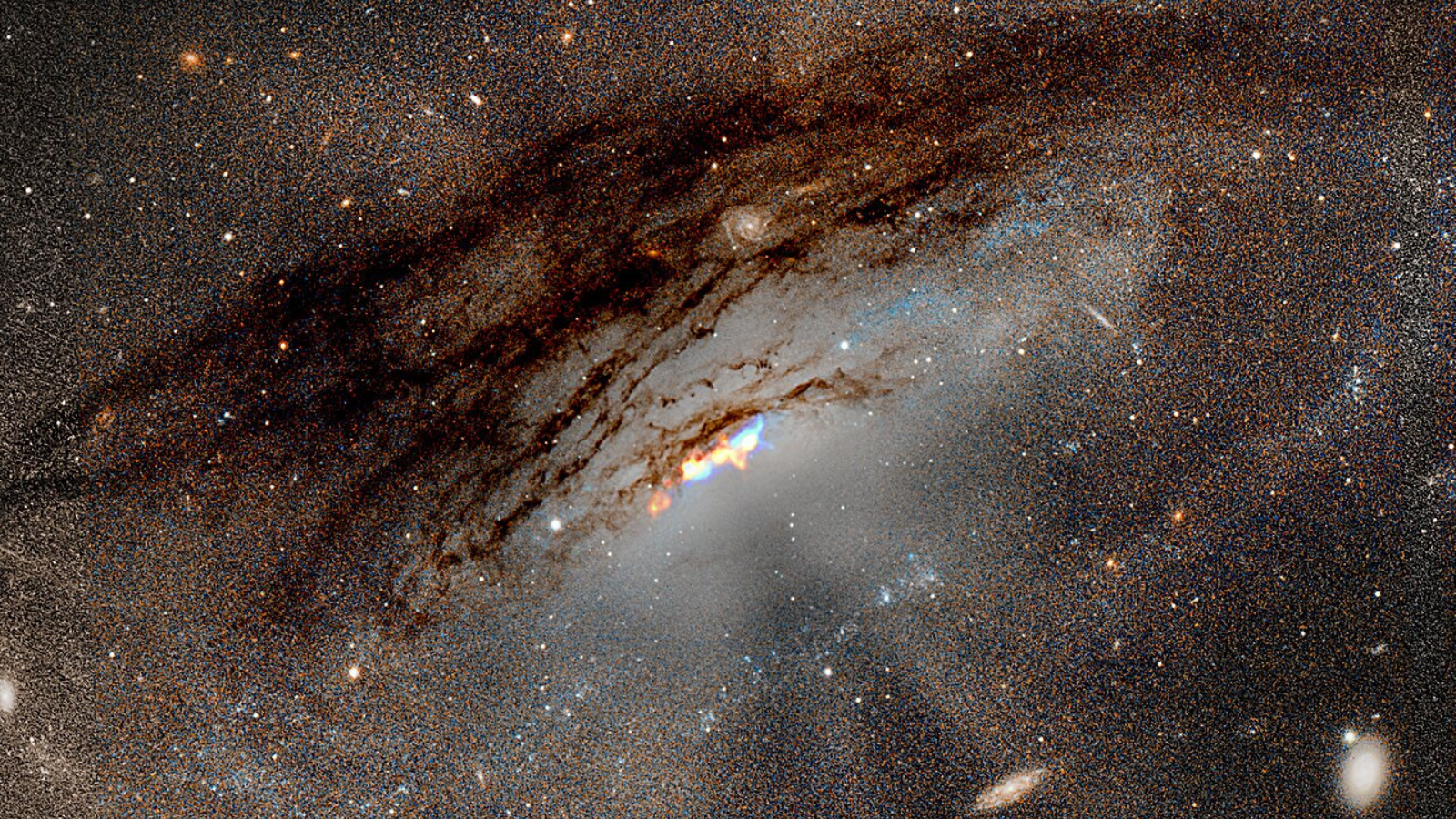
Here's a guide for October skywatchers: First catch Saturn, then Jupiter, Mars and Venus, and finally Mercury in the night sky as this month's planetary parade begins.
As October opens, we find only one bright evening planet — Saturn — and by month's end, it will be gone, thanks to its lowering altitude and it's setting progressively closer to sunset. Meanwhile, three —eventually four — bright planets put on a great show for those who manage to get up at the crack of dawn. During the first half of October, Jupiter, Mars and Venus will be readily evident in the eastern sky, 60 to 90 minutes before sunrise.
Regulus, the brightest star in Leo, the Lion, will hover near Venus when a waning crescent moon passes by on the mornings of Oct. 8 and 9. During the second week of October, Mercury begins to appear down low near the eastern horizon; it will become more favorably placed later in the month. And on the morning of Oct. 17, Jupiter and Mars draw close together, less than the apparent width of the moon. Last, but not least, Jupiter and Venus once again engage in an eye-catching conjunction on the morning of Oct. 25.
Remember, that you can use your clenched fist at arm's length — equal to about 10 degrees of the night sky — to measure angular distances. The brightest stars are equal to first or zero magnitude, while the very brightest objects (Venus, the moon and the sun) are of negative magnitude. Here's a look at when to see the brightest planets in the October night sky, if weather conditions cooperate. [Watch: Andromeda and More: October 2015 Skywatching Highlights]
Oct. 8 and 9 – It will be well worth your while to set your alarm clock for around 5:30 a.m. local daylight time, losing a little sleep and venturing outside to view a fascinating and changing array between three planets, a bright star and a waning crescent moon in the eastern sky.
On the morning of Oct. 8, you'll see a slender crescent moon — and 5 or 6 degrees to its lower left you'll see dazzling Venus, the queen of the dawn, and the much fainter Regulus, brightest star of Leo. On the morning of Oct. 9, a thinner lunar crescent will form an isosceles triangle; the vertex angle is at Mars, while Jupiter and the moon form the base angles — Jupiter to the lower left of the moon. The Mars-Jupiter and Mars-moon sides (the "legs") measure 4 degrees long, while the base formed by Jupiter and the moon measure 6 degrees. Also on Oct. 9, Venus is in conjunction with Regulus, passing 2.5 degrees south of it, below and to the right, and appears nearly 230 times brighter than the bluish star.
Oct. 11 – At around 5:15 a.m. local daylight time, look low toward the horizon, slightly south of due east. Make sure there are no obstructions such as trees or buildings, and you might spy an exceedingly thin crescent moon, only 2 percent illuminated; resembling a "thin smile" on the sky. And less than 2 degrees to its upper left is the planet Mercury. See Oct. 15 for more details.
Get the Space.com Newsletter
Breaking space news, the latest updates on rocket launches, skywatching events and more!
Oct. 15 – Mercury can be seen with the unaided eye for the last three weeks of October. Beginning around the Oct. 8, look for it three-quarters of an hour before sunup, close to the horizon, just south of due east. The planet triples in brightness over the next week. This morning Mercury attains its greatest elongation — its farthest distance from the sun as seen from Earth — 18 degrees west of the sun, and the planet stands almost directly above the sun from mid-northern latitudes. For this reason it is Mercury's best morning apparition of the year in most parts of the United States — an almost paradoxical fact, since Mercury's angular distance from the sun is greater during each of its other six apparitions over the course of this year.
After Oct. 15, Mercury begins a more leisurely slide back toward the sun. Even by month's end, a by-then-brilliant Mercury (magnitude -1.0) might be still be glimpsed low in the east-southeast about 30 to 40 minutes before sunup. If you can still see the planet at the end of October, then use binoculars to search for another fainter object just emerging from solar conjunction. On the Oct. 29, Spica is 3.8 degrees to the south, below and to the right of Mercury. In the first week of November, Spica will become an easy naked-eye target, while Mercury will disappear.[How to Spot the Asteroid Vesta in October's Night Sky]
Oct. 16 – Very soon, Saturn will be lost in the glare of the sun, probably by the end of this month. Before then, it shines through the glow of the western twilight each evening. Today it crosses over into the boundaries of Scorpius, having spent the late spring, summer and early fall in Libra. It currently is 9 degrees to the right of the red star Antares and about 1.5 times brighter. And hovering 5 degrees to its upper left this evening will be a four-day old crescent moon.
Oct. 17 – Jupiter and Mars form a highly contrasting "double planet" in the eastern sky for more than 3 hours before sunup. This morning they are separated by less than the apparent width of the moon, only 0.4 degrees. Mars is positioned to Jupiter's upper left and is now far from the Earth (213.5 million miles) while approaching the aphelion point in its orbit (on Nov. 20), when it's farthest from the sun, so it's nearly as faint as it ever gets at magnitude +1.7. Jupiter, on the other hand, is brilliant at magnitude -1.8 and appears 25 times brighter than the Red Planet.
Looking by telescope, Jupiter displays a relatively large disk roughly 1/2-arc minute in diameter; a wealth of detail in Jupiter's clouds should be detectable by telescope on a night of excellent atmospheric viewing. Meanwhile Mars shows itself as nothing more than a featureless orange dot only an eighth as wide as Jupiter.
Oct. 25 – Venus has a close conjunction with Jupiter this morning. When rising together around this date they may seem doubly eerie. Earlier in the month Venus rose first; after this morning Jupiter will be the earliest up. Venus and Jupiter will be 1.1 degrees apart. This is a reprise of the evening Venus-Jupiter conjunction in June, but at that time the planets were separated by roughly one-third the distance.
Oct. 26 – Venus in October is the highest it ever gets in the dawn sky, about 30 degrees up in the southeast an hour before sunrise for watchers at mid-northern latitudes. It rises within several minutes of 3:25 a.m. local daylight time all month, its earliest rising time this year or next. It shines in the dark eastern sky for more than 2 hours before the first light of dawn. This lamplike planet attains greatest elongation (46 degrees west of the sun) this morning. Can you see Venus in the telescope exactly half-illuminated this morning, or a few days before or after?
Editor's note: If you capture an amazing image of the night sky that you would like to share with Space.com and its news partners for a story or photo gallery, send photos and comments in to managing editor Tariq Malik at: spacephotos@space.com.
Joe Rao serves as an instructor and guest lecturer at New York's Hayden Planetarium. He writes about astronomy for Natural History magazine, the Farmer's Almanac and other publications, and he is also an on-camera meteorologist for News 12 Westchester, N.Y. Follow us@Spacedotcom, Facebook or Google+. Originally published on Space.com.
Join our Space Forums to keep talking space on the latest missions, night sky and more! And if you have a news tip, correction or comment, let us know at: community@space.com.

Joe Rao is Space.com's skywatching columnist, as well as a veteran meteorologist and eclipse chaser who also serves as an instructor and guest lecturer at New York's Hayden Planetarium. He writes about astronomy for Natural History magazine, Sky & Telescope and other publications. Joe is an 8-time Emmy-nominated meteorologist who served the Putnam Valley region of New York for over 21 years. You can find him on Twitter and YouTube tracking lunar and solar eclipses, meteor showers and more. To find out Joe's latest project, visit him on Twitter.









